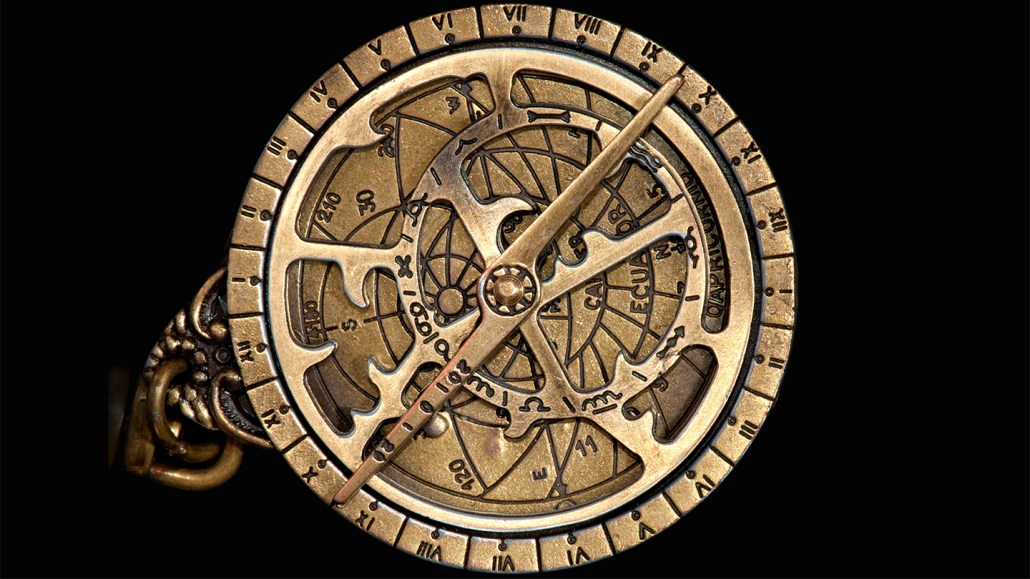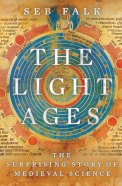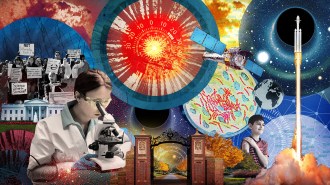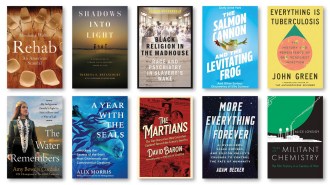‘The Light Ages’ illuminates the science of the so-called Dark Ages
The book re-creates the life of a monk who contributed to astronomy

The Middle Ages saw advances in the making of scientific instruments, such as the astrolabe (a replica of a medieval one is shown), a device used to measure the positions of astronomical objects.
Brian Maudsley/Alamy Stock Photo
- More than 2 years ago
The Light Ages
Seb Falk
W.W. Norton & Co., $30
A long-standing myth about medieval history is that the Middle Ages were intellectually dark. Science supposedly took a hiatus between the demise of Rome and the rise of Copernican astronomy and Galileo’s physics, some superficial accounts suggest.
“The medieval reality, however, is a Light Age of scientific interest and inquiry,” historian Seb Falk writes in The Light Ages. Historians have long known that medieval monasteries and universities hosted many deep thinkers engaged in sophisticated intellectual enterprises. In particular, Falk emphasizes, the medieval era produced high-level technical achievements in the realm of scientific instrument making.
Falk tells his story from the perspective of John Westwyk, a monk at St. Albans Abbey in England in the 14th century. Little is known about Westwyk, but Falk re-creates his life through an account of the life events and duties of monks at that time. Westwyk is known to have produced two important astronomical manuscripts, both about scientific instruments.
Most noteworthy among the instruments of the day was the astrolabe, a contraption containing movable disks to measure and represent the positions of astronomical objects. If you ever wondered how astrolabes worked, down to the last detail, this is the book for you. And if you’re curious about the medieval obsession with astrology — a prime motivation for building astrolabes — your appetite will be sufficiently satisfied.
Sign up for our newsletter
We summarize the week's scientific breakthroughs every Thursday.
If you desire more detail about medieval science, though, other books offer more. Falk mentions only in passing the accomplishments of some of the era’s many serious science-minded scholars, such as Robert Grosseteste, Roger Bacon, Albert the Great and Nicole Oresme. There is virtually no discussion about the science of mechanics during the Middle Ages, which, while falling short of modern understanding, still provided a foundation for later achievements.
Nonetheless, Falk’s book offers an illuminating antidote to the “Dark Ages” myth. It’s thoroughly documented, richly illustrated and engagingly written (although with occasional slower sledding through the details of some of those astronomical mechanisms and the casting of horoscopes).
Falk says he “sought to tell the story of medieval science … as an integral part of medieval life and culture,” and he succeeds in embedding scientific pursuits within the culture of medieval religious life. Science and religion were not generally at odds, as sometimes assumed, but rather were dual attempts to grasp the workings of God’s creation. True, theologians sometimes clashed with natural philosophers, but everyone operated within the understanding that the study of nature was the study of God’s work.
Falk’s account is not the whole story of all the ways that medieval science was light rather than dark. But it is still an important part of that story.
Buy The Light Ages from Bookshop.org. Science News is a Bookshop.org affiliate and will earn a commission on purchases made from links in this article.








